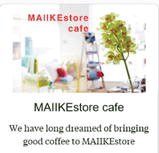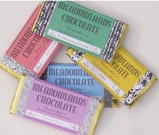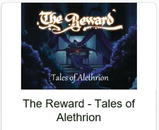As a maker of memes, you are no doubt buoyed by the idea that your work can be preserved forever in our thoughts if it can survive the initial bottlenecks of attention, perception, and memory. As well you should be! Some representation of your app, portal, or service—once we encode it—it may be stored for a lifetime.
But we must be able to retrieve your meme from memory if we are to use it a second time or recommended to others. And not only must we retrieve the name of your brand, often we must also retrieve the password we made when we registered for it.
Passwords are perhaps the deadliest UX bottleneck on the web. Apple evangelist Guy Kawasaki listed case-sensitive passwords in his 2007 article The Top Ten Stupid Ways to Hinder Market Adoption. He writes, “One of the funniest moments of a demo is when a company’s CEO can’t sign into her own account because she didn’t put in the proper case of her username or password.” i
Funny indeed, unless you’re that CEO. And never funny for us users. As the U.S. population ages and the number of registered services skyrockets, the “shared secret” form of passwords (where your users and your database both know the same string of characters) has grown so difficult to use that it has become an accessibility issue unfairly preventing many of us from engaging important online services, including those sponsored by government. As an example of excessive password protection, the Good To Go! automatic highway-tolling passes sold by the Washington State DOT in 2016 required an email , a user ID, a password (entered twice), three security questions (all entered twice), and a four-digit PIN (Figure 10-1). The ability of many users to complete this registration and correctly recall all of these passwords was slim indeed.

Figure 10-1. The Good to Go! highway tolling account uses multiple forms of passwords. ii
And yet, the hackers who are lying in wait to steal our sensitive data are only getting better. Even the dumb ones can use “brute force” software to crack seven-character passwords in only .29 milliseconds as of 2015. So requiring longer passwords with all of the ASCII characters is necessary, since a eight-character password takes four months to crack, and a nine-character password take 10 years. iii But the longer passwords get, the harder they get to retrieve from memory. Especially if we need to refresh them every few months.
Key Point
Taking steps to enable us to retrieve your brand from memory, as well as our password to be able to use it, will help increase engagement and word-of-mouth recommendations.
So how can you encourage us to remember the longer passwords that, for security reasons, you should force us to make? To understand the neurology of memory retrieval and get it to work in your favor, you need to leverage your understanding of networks, with which you are already no doubt very familiar. With this metaphor, you’ll quickly see how memes are encoded and retrieved, and you’ll know how to help ensure we retrieve yours.
As a network, the human nervous system is far more complex than the web. Comparing just one brain to all of Facebook , it has more nodes(100 billion neurons to Facebook’s 1.79 billion users), and far more linksor edges (an average of 7,000 synapses per neuron, dwarfing Facebook’s 338 friends per user). iv , v , vi Synapsesare the connection points between neurons, tiny gaps out at the end of branches called dendriteswhere the signal crosses chemically rather than electrochemically. They are ever-changing, just like our followers on Twitter . New synapses are formed and multiplied, they combine to either turn on or turn off the downstream neurons, and dendrites are fattened or shrunk depending on the strength and frequency of the signal, that is, whether they are used a lot or only rarely.
For most of the last century, the complexity of networks has daunted psychologists. But in recent decades, their theories are embracing network terms and ideas. They now refer to the “pathways” in the brain rather than “areas,” the “dynamics” of mental illness rather than “disorders,” and “semantic networks” rather than “concepts.”
Memory theorists were among the first to retool their theories using network metaphors. They began by discarding the idea of memory as a container. Memory is not a bucket that we fill up any more than a computer hard drive is; both store information by making semi-permanent changes in connections rather than holding things in a place. And we do not have two separate brains for doing and remembering. Instead one brain does both. Thus, recalling a memoryis really about re-igniting the pathways that were active at the moment of the original experience. Seen this way, memories are not movies. When we remember something, we reconstruct what it must have been like, rather than play a video of what it was like. There may be a few fairly accurate images, sounds, and smells sprinkled in, but they are stitched together with assumptions.
In sum, new memories aren’t stored and saved, they’re linked in and friended. And the more elements we link with them, the more pathways there are to retrieve them.
Psychologists might have realized this decades earlier if an oversimplification of Pavlov’s original discovery hadn’t obscured it. At the moment Pavlov’s dogs were salivating to meat powder, they were not merely associating it with the bell, they were also associating it with the shape of the bowl, the colors in the lab, the smell of the researcher, his coat and facial hair and tone of voice, and even the time of day. In truth, the dogs were networking together all of the elements in their immediate environment into their memory. Pavlov knew this because he saw the dogs begin to drool when he entered the room. But it took until the 1970s for psychologists to recognize that memories are context dependent, that is, they are associated with all stimuli in the environment (both internal and external) that are present at the moment they are formed.
That means you can use any element that was present at the time we learned your meme to help us recall it. Godden and Baddeley demonstrated this vividly on scuba divers in 1975. vii They had the divers learn lists of words either on dry land or underwater. When the divers learned them underwater initially, they were better at recalling them underwater where it mattered. No special effort was needed to improve recall, no tedious repetition, no laborious mnemonics; the researchers just used the environmental milieu to help reactivate the network of memories in which the target memes were embedded. After this study was published, scuba instructors promptly started teaching lessons at the bottom of swimming pools.
What’s more, you can take steps to enrich the network of retrieval elementsthat are present at the moment we encode your meme. This will give us more pathways to retrieve it. All you need to do is show one or more well-learned memories at the same time you present your new meme. Pair a duck with Aflac, a gecko with GEICO, and a race car with GoDaddy (or an attractive race car driver). If you’ve ever watched us trying to recall a brand during, say, a focus group, you’ll observe how we think about and even voice aloud these retrieval elements. “You know, the insurance company with the gecko, and the caveman, and ’the save 15% in 15 minutes’…GEICO!” On a neural level, we’re igniting well-learned memories in the hope of enervating the new memory, leveraging a process known to neuroscientists as spreading activation. viii Thus pairing your meme with a “buddy” this way is a far more efficient way to help us recall it than, say, repeating “Government Employees Insurance Company” over and over.
This is why the best long password is the first letter of an unforgettable phrase. Encourage your users to think of a phrase of a hero of theirs and base their password on it. Seattle Seahawks’ head coach Pete Carroll says “Stay hungry, remain humble, and get better today.” ix Take the first character of every word in that phrase (including the unimportant words), sprinkle in some special characters, favorite numbers, upper- and lowercase, and a few unique letters from the service, and you can have a Facebook password like:
sHrHaGBtFB*5
At 12 characters, hackers would need over 200 years to crack this password with brute-force methods. x But it is much easier to remember since it is stored with many retrieval elements, that is, rich memories with emotional tones, all of which can help us reignite this memory at will.
Taking this idea further, you should leverage retrieval elements to help us remember your brand as well as our passwords. With every presentation of your meme or your brand, you should encourage your users to actively do what Craik and Lockhart in 1972 called elaborative encoding. xi This is an active effort to think deeply about a meme so as to maximize the connections with existing memories. The longer and deeper we process your meme, the more voltage (called action potentials) we route through the network that contains it, and this literally helps us grow more synapses and fatter dendrites in the pathways leading into your meme.
Encouraging elaborative encoding would be a great help to many campaigns on Kickstarter, a site where you seek funding for your inventions from amateur investors who pre-order them. Some of your pitches promote elaboration and good recall, others less so (Table 10-1).
Table 10-1. Some Kickstarter Campaigns Encourage Visitors to Elaboratively Encode Their Meme, Helping to Ensure They Will Recall It Later xii
Phonemic/auditory processing: Tell us what your meme sounds like. The tagline “Jeaux-Racha - One taste and we gotcha” demonstrates this beautifully. By contrast, we’re not sure how to pronounce MAIIKEstore Café and this limits our ability to recall it later. |
 |
Structural/visual processing: Pay a designer to make a unique logo and icons, and prominently display it so we examine the typeface, capitalization, and colors. The Craft Beverage Underground did this more so than most. |
 |
Repetition: This is the shallowest form of processing, but it helps keep memes in working memory longer, which is a baseline requirement for long-term encoding. Meadowlands Chocolate used the word “Meadowlands” no less than 41 times on its pitch page. |
 |
Imagery processing: Include pictures of your product, or what using it looks like. Without them, we could not have encoded how IceLiners layered the bottom of our martini glass with ice. |
 |
Semantic processing: Teach us the definition of your brand name, its etymology, or how to use it in a sentence. The Comedor restaurant pitch did this when they told us it means “dining room” in Spanish. |
 |
Association priming: In choosing a name, think about spreading activation again. What network of associations does your name ignite for us? Is this where you want your meme to be? For example, did the BTU Brasserie make us think of a Chinese restaurant and craft brewery (which it is), or just the smell and taste of propane? |
 |
Procedural processing: Encourage us to touch, write, or draw your idea. Networked into our memories are plenty of muscular, procedural, motor functions, meaning that if you encourage us to do anything with your idea, we’ll be more likely to recall it. Have us write it, type it (say as a post on Twitter), draw it, anything, and that’s one more pathway able to reignite it. SunCreature Studio wanted to produce an animated series called the “Tales of Alethrion ,” and it held a drawing contest as part of its pitch. All 200 people who sent in entries were assured of remembering the project, and the study had cool new content to show in an update. |
 |
Reworking: Encourage us to put your essential information in our own words. Elroy developed Bluetooth ear buds with magnetic docking, but they didn’t have a tagline. So they asked for help from the crowd. You can be sure everyone who participated remembered Elroy, as well as anyone who didn’t join the contest but still spent a few minutes pondering some marketing copy. |
 |
Locus processing: Tie your idea to a place that people know well to co-opt its associations for your idea. Often on Kickstarter, local investors buy in to local ideas, which is why there is a location filter on the lists. But also use locations to cue us to see your idea more vividly. Carrots on Fire pitching sriracha-flavored carrot chips sounded yummy, but they missed an opportunity to tie them in to a spicy-sounding place in California where they came from. By contrast, Stroopwafel Heaven mentioned its Dutch origins five times in its pitch. |
 |
Self-processing: Tie your idea to the single most prominent memory each of us has: ourselves. Too many Kickstarter campaigns talk about what “we” want to do with the funding and how the plural “you” can help us. But the tagline for the OmieBox told us it was “a lunchbox for hot and cold food so you can send your kids’ favorite meals.” This doesn’t seem like any special genius, but the OmieBox was fully funded with $120,000 from almost 2,000 backers. That line spoke to somebody. |
 |
The point of all this is that memes that help us tie in to the sticky ends of our life experiences will be more easily retrieved (and more memetically fit) than those that don’t.
Key Point
Elaborative encoding is actively linking new memes to previously stored memories, which helps ensure they will be retrieved. You can encourage us to process your meme more deeply in a variety of ways.
Does any of this sound familiar? It should, because by analogy, retrieval element optimization (REO?) is a lot like search engine optimization (SEO) . For decades, online ventures have invested in SEO, linking new web sites with existing ones and packing them with detailed text that gives Google’s bots as many search strings as possible to find them. REO is just doing the same thing for us, your users, and our own organic methods of searching for and pulling up memories.
But curiously, your SEO may be making both of us lazy about doing REO. Humans have always relied on external aids to retrieve memes, from scratches on stone tablets, to shopping lists penciled on paper, to asking our friends and spouses who share our same experiences. Any time we look to another person to recall something, it’s called transactive memory. xiii This used to be conceived as a phenomenon of the elderly (“Say darling, what was the name of that couple we met on the cruise?”), but it may go much further. In fact, Google is rapidly becoming our new best friend.
We are, after all, cognitive misers who only expend the minimal energy sufficient to achieve our goals (in this case, recall). So if we believe an external aid can help us access a memory later, there is no reason to do the work of encoding it with rich neural connections. “I don’t need to memorize it; I wrote it down,” we seem to feel, or “I can ask my husband,” or increasingly “I can Google it later.”
Betsey Sparrow, Jenny Liu, and memory guru Daniel Wegner demonstrated this powerfully in 2011. xiv They showed 40 trivia statements to college students (“An ostrich’s eye is bigger than its brain.” “The space shuttle Columbia disintegrated during re-entry over Texas in February 2003.”) and asked them to type the statements into a computer, saying they would be tested on them shortly. Half of the students were told the computer would save their entries, leading them to believe they had a transactive memory partner. The other half were told their entries would not be saved, leading them to believe they had to rely on their own brains for the test. The former students ostensibly neglected to encode the statements very richly, thinking they had a means of accessing them through external, rather than internal networks, and when the test came they performed significantly worse.
Just like senior citizens sometimes have to fly solo without their spouses, there is still plenty of argument for helping ensure us, your users, encode your meme for retrieval without a device. Despite the rise in social sharing, only a fraction of all word-of-mouth is digitized, and thus you will neglect a giant chunk of free marketing if you abandon human memory. Driving and other activities preclude searching in a safe and convenient way. And although voice assistants like Google Now have given us more hands-free access, our working memory capacity will continue to be capped at times when speed matters. (Think of the classic demonstration that no hand-held calculator can outpace a third grader who has learned her multiplication facts.)
Key Point
Recent research on the “Google effect” on memory suggests that we make less of an effort to elaborately encode information when we feel that online search engines will help us to find it later.
Yes, we can always Google something later to get the details we can’t, won’t, or shouldn’t try to remember. But what if there are too few retrieval elements to even remind us to do a Google search? Another meme falls dead in a silent forest, failing to help a user at the moment when it matters.
That’s what happens to meme makers like you when you skip elaborative encoding and do only minimal REO . But what is the impact on us, when we no longer go to the trouble to memorize things? Is the impact limited to botched jokes and tip of the tonguephenomenon when we can’t activate a target memory that was too weakly encoded?
No. Ironically, as the ability to search the swarm mind becomes more ubiquitous, hands-free, and even surgically embedded, our ability to store and retrieve ideas without the crutch of technology will only be honored more profoundly as a hallmark of personal intelligence. Imagine two candidates for a job:
Candidate one says, “There are some great ideas in this healthcare blog I read recently, but I can’t remember who wrote it. I’ll Google it later and send you the link.”
Candidate two says, “There are some great ideas in this healthcare blog I read recently by Michael Goodheim. He lays out some things small business can do which we should consider.”
Whom would you hire?
Currently, when we ask our friends questions like, “what year did the space shuttle Columbia explode?” many answer snarkily “let me Google that for you,” implying they have something better to do with their attention than be our transactive memory partner (there’s even a web site lmgtfy.com). But imagine instead they answered 2003 without hesitation. Hash tag: #smart. In everyday social situations, when we assess others’ native skills and intelligence, we tend to discount them if they appear to have had any sort of assistance or help. The tech giants are in a race to offer us artificial intelligence (AI) and digital assistants. But they will have to design and position them not to put our own abilities in doubt.
Maybe you don’t like the acronym REO (retrieval element optimization) as a counterpart to SEO (search engine optimization) . Maybe it activates an association network for you that includes a schmaltzy big-hair rock back of the 1980s. But you see the metaphor, which we have used to link a new concept with existing ones in your memory. Here’s an idea: let’s have a naming contest.
Notes
Kawasaki, G. (2007, January 29) The top ten stupid ways to hinder market adoption. Retrieved from http://guykawasaki.com/the_top_ten_stu/ .
Good To Go! (2016, September). Online setup. Retrieved from https://mygoodtogo.com/olcsc/home/onlineAccessAccountInfo.do .
BetterBuys. (2016, November). Estimated password-cracking times. Retrieved from https://www.msecure.com/blog/how-strong-is-your-password/ .
See also mSecure (2015). How strong is your password? Retrieved from https://www.msecure.com/blog/how-strong-is-your-password/ .
Statista. (2016, September). Number of monthly active Facebook users worldwide as of 3rd quarter 2016 (in millions). Retrieved from https://www.statista.com/statistics/264810/number-of-monthly-active-facebook-users-worldwide/ .
Drachman D.A. (2005). Do we have brain to spare? Neurology. 64 (12), 2004–5. Retrieved from http://www.neurology.org/content/64/12/2004 .
Smith, A. (2014). 6 new facts about Facebook. Pew Research Center. Retrieved from http://www.pewresearch.org/fact-tank/2014/02/03/6-new-facts-about-facebook/ .
Godden, D. R., & Baddeley, A. D. (1975). Context‐dependent memory in two natural environments: On land and underwater. British Journal of Psychology, 66(3), 325–331.
Anderson, J. R. (1983). A spreading activation theory of memory. Journal of Verbal Learning and Verbal Behavior, 22(3), 261–295.
Retrieved September 2016 from AZQuotes http://www.azquotes.com/quote/733721 .
BetterBuys (2016). ibid.
Craik, F. I., & Lockhart, R. S. (1972). Levels of processing: A framework for memory research. Journal of Verbal Learning and Verbal Behavior, 11(6), 671–684. See also Gardiner, J.M., Gawlik, B., & Richardson-Klavehn, A. (1994). Maintenance rehearsal affects knowing, not remembering; Elaborative rehearsal affects remembering, not knowing. Psychonomic Bulletin & Review, 1, 107–110.
Kickstarter campaigns retrieved September, 2016.
Jeaux-Racha… https://www.kickstarter.com/projects/60804300/jeaux-racha-one-taste-and-we-gotcha ;
MAIIKEstore Café… https://www.kickstarter.com/projects/735750837/maiikestore-cafe ;
Craft Beverage… https://www.pinterest.com/theCBU/ ;
Nitro Pop… https://www.kickstarter.com/projects/uncle-pops/nitro-pop-a-frozen-popcorn-dessert-by-uncle-pops .
Meadowlands Chocolate… https://www.kickstarter.com/projects/1412260686/meadowlands-chocolate ;
IceLiners… https://www.kickstarter.com/projects/1905411155/iceliners ;
Comedor… https://www.kickstarter.com/projects/1348706608/comedor ;
BTU Brasserie… https://www.kickstarter.com/projects/585004590/btu-brasserie-chinese-restaurant-and-craft-brewery ;
Tales of Alethrion… https://www.kickstarter.com/projects/1862188728/the-reward-tales-of-alethrion ;
Elroy… https://www.kickstarter.com/projects/363428889/bluetooth-earbuds-w-magnetic-docking-made-in-usa ;
Carrots on Fire… https://www.kickstarter.com/projects/416092758/carrots-on-fire ;
Stroopwafel Heaven… https://www.kickstarter.com/projects/1122393303/stroopwafel-heaven ;
OmieBox… https://www.kickstarter.com/projects/506949578/omiebox-hot-and-cold-food-in-1-lunchbox
Wegner, D. M. (1987). Transactive memory: A contemporary analysis of the group mind. In B. Mullen & G.R. Goethals (Eds.), Theories of Group Behavior (pp. 185-208). New York, NY: Springer.
Sparrow, B., Liu, J., & Wegner, D. M. (2011). Google effects on memory: Cognitive consequences of having information at our fingertips. Science, 333(6043), 776–778.
Ross, L. D., Amabile, T. M., & Steinmetz, J. L. (1977). Social roles, social control, and biases in social-perception processes. Journal of Personality and Social Psychology, 35(7), 485.
